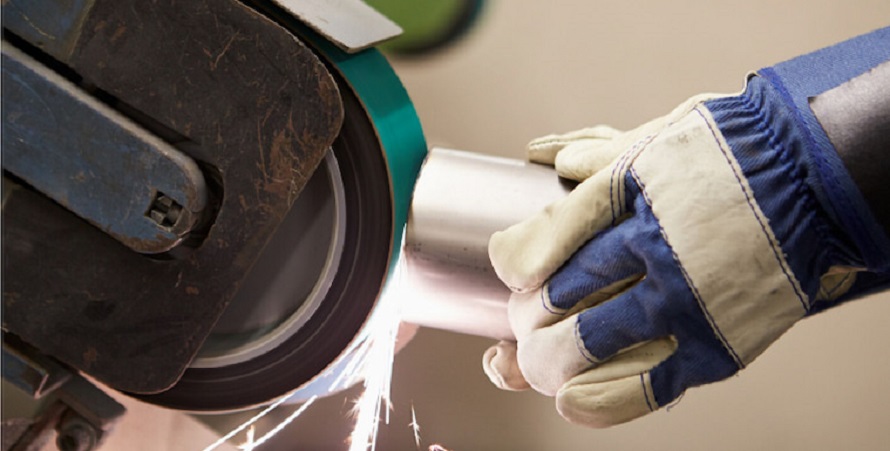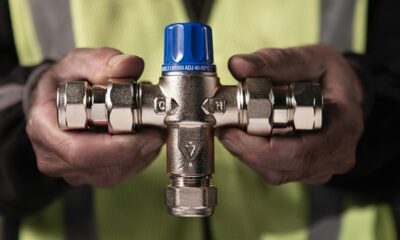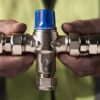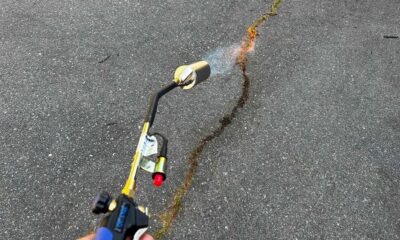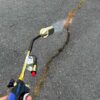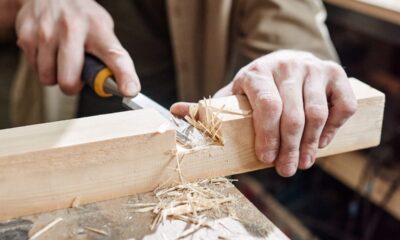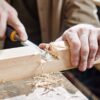Industry
Linishing Belts: A Comprehensive Guide for Precision and Durability
In the world of metalworking, woodworking, and various other trades, achieving a smooth and refined finish is crucial. One tool that plays an essential role in this process is the linishing belt. These belts, integral to linishing machines, are designed to provide precise, durable, and efficient grinding and polishing, making them indispensable in workshops across Australia and beyond. This article delves into the intricacies of linishing belts, exploring their types, applications, and maintenance to help professionals and hobbyists alike make informed decisions.
What is Linishing?
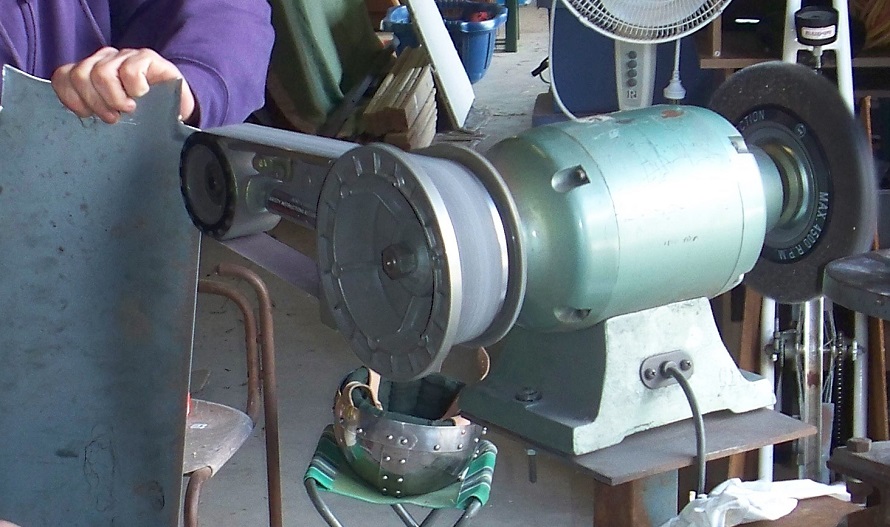
source: wikipedia.org
Linishing is a process used to refine the surface of a workpiece by grinding, sanding, or polishing. It is commonly employed to remove burrs, sharp edges, and imperfections, providing a smooth and sometimes polished finish. Linishing is widely used in metalworking, woodworking, and even in some plastic and composite material applications. The term “linishing” is derived from the word “line,” reflecting the process of creating a smooth, straight finish on a surface.
Types of Linishing Belts
Linishing belts come in a variety of materials and grits, each suited to specific tasks and materials. The most common types include:
- Aluminium Oxide Belts: These are the most widely used linishing belts due to their versatility and durability. They are suitable for a range of materials, including wood, metal, and plastic. Aluminium oxide belts provide a good balance between cutting speed and longevity.
- Zirconia Alumina Belts: Known for their toughness and longevity, zirconia alumina belts are ideal for heavy-duty grinding and linishing tasks. They are particularly effective on stainless steel and other hard metals. Their self-sharpening characteristic ensures consistent performance over time.
- Ceramic Belts: Ceramic linishing belts are the top choice for high-pressure applications and for working with hard metals like titanium and stainless steel. They offer excellent cutting power and longevity, making them a cost-effective option for industrial use.
- Silicon Carbide Belts: These belts are best suited for non-ferrous metals, glass, ceramics, and stone. Silicon carbide belts provide a very sharp and fast cut but tend to wear out more quickly than other types.
- Trizact Belts: Trizact belts are engineered with a unique pyramid-shaped abrasive structure, which provides a more consistent finish and longer lifespan. They are ideal for fine finishing and polishing applications.
Applications of Linishing Belts
The versatility of linishing belts makes them suitable for a wide range of applications across different industries. Some of the primary uses include:
- Metalworking: In metalworking, linishing belts are used to remove burrs, grind welds, and prepare surfaces for further finishing processes like painting or plating. They are essential for achieving smooth, polished edges and surfaces on various metal components.
- Woodworking: Woodworkers use linishing belts to sand and shape wooden pieces. The belts help in smoothing rough edges, leveling surfaces, and preparing wood for finishing. They are particularly useful in furniture making, cabinetry, and wooden crafts.
- Automotive Industry: In the automotive sector, linishing belts are employed to finish and polish metal parts, ensuring they meet stringent quality standards. They are used in the production of engine components, body panels, and other critical parts.
- Aerospace Industry: Aerospace manufacturers rely on linishing belts for precision finishing of components made from high-strength alloys and composites. The belts help achieve the necessary surface finish and tolerances required for aerospace applications.
- Jewelry Making: Jewelers use fine-grit linishing belts to polish and finish precious metals and gemstones. The belts allow for precise control and a high-quality finish on intricate pieces.
Choosing the Right Linishing Belt
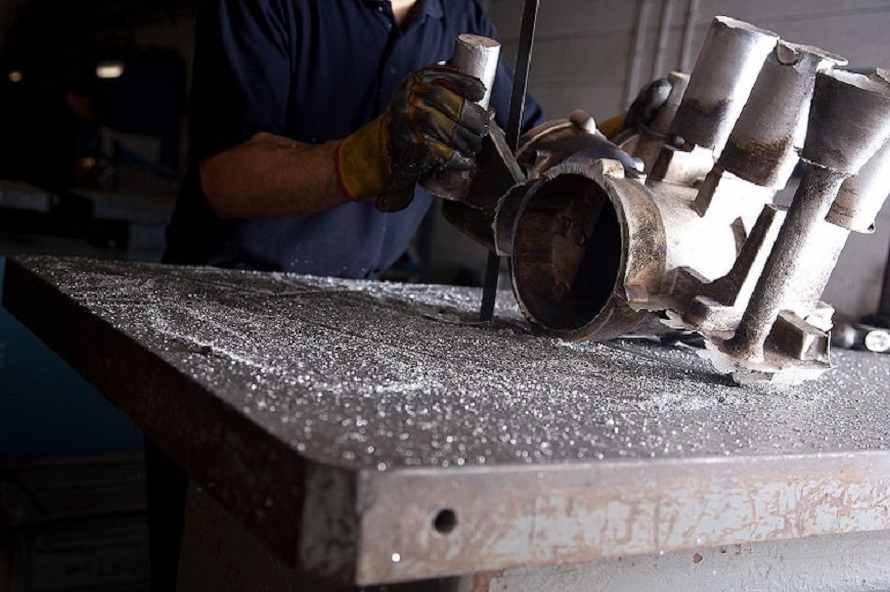
source: trendhunter.com.au
Selecting the appropriate linishing belt for a specific task involves considering several factors:
- Material: The type of material being worked on determines the choice of linishing belt. Harder materials require tougher abrasives like zirconia alumina or ceramic, while softer materials can be worked with aluminium oxide or silicon carbide belts.
- Grit Size: The grit size of the belt affects the finish of the workpiece. Coarse grits (24-60) are used for heavy material removal and rough grinding, while finer grits (120-600) are used for finishing and polishing.
- Belt Size: Linishing belts come in various sizes to fit different machines. It is essential to choose a belt that matches the dimensions of the linishing machine being used.
- Belt Speed: The speed at which the belt runs impacts its performance. Higher speeds are suitable for aggressive grinding, while lower speeds are better for finishing tasks.
Maintaining Linishing Belts
Proper maintenance of linishing belts is crucial for ensuring their longevity and performance. Here are some tips to keep belts in optimal condition:
- Regular Cleaning: Clean the belts regularly to remove debris and prevent clogging. Use a belt cleaning stick or a specialized cleaning solution to keep the abrasive surface clear.
- Proper Storage: Store linishing belts in a cool, dry place to prevent moisture damage. Avoid exposing them to extreme temperatures or direct sunlight.
- Inspection: Regularly inspect belts for signs of wear, damage, or clogging. Replace belts that show significant wear or damage to maintain optimal performance.
- Correct Usage: Ensure the belt is correctly tensioned and aligned on the machine to prevent uneven wear and improve efficiency.
Conclusion
Linishing belts are a fundamental tool in achieving high-quality finishes in various industries. Understanding the different types, applications, and maintenance practices is essential for selecting the right belt for the job and ensuring its longevity. Whether you’re a professional metalworker, woodworker, or hobbyist, investing in quality linishing belts and taking proper care of them will significantly enhance the quality and efficiency of your work.


